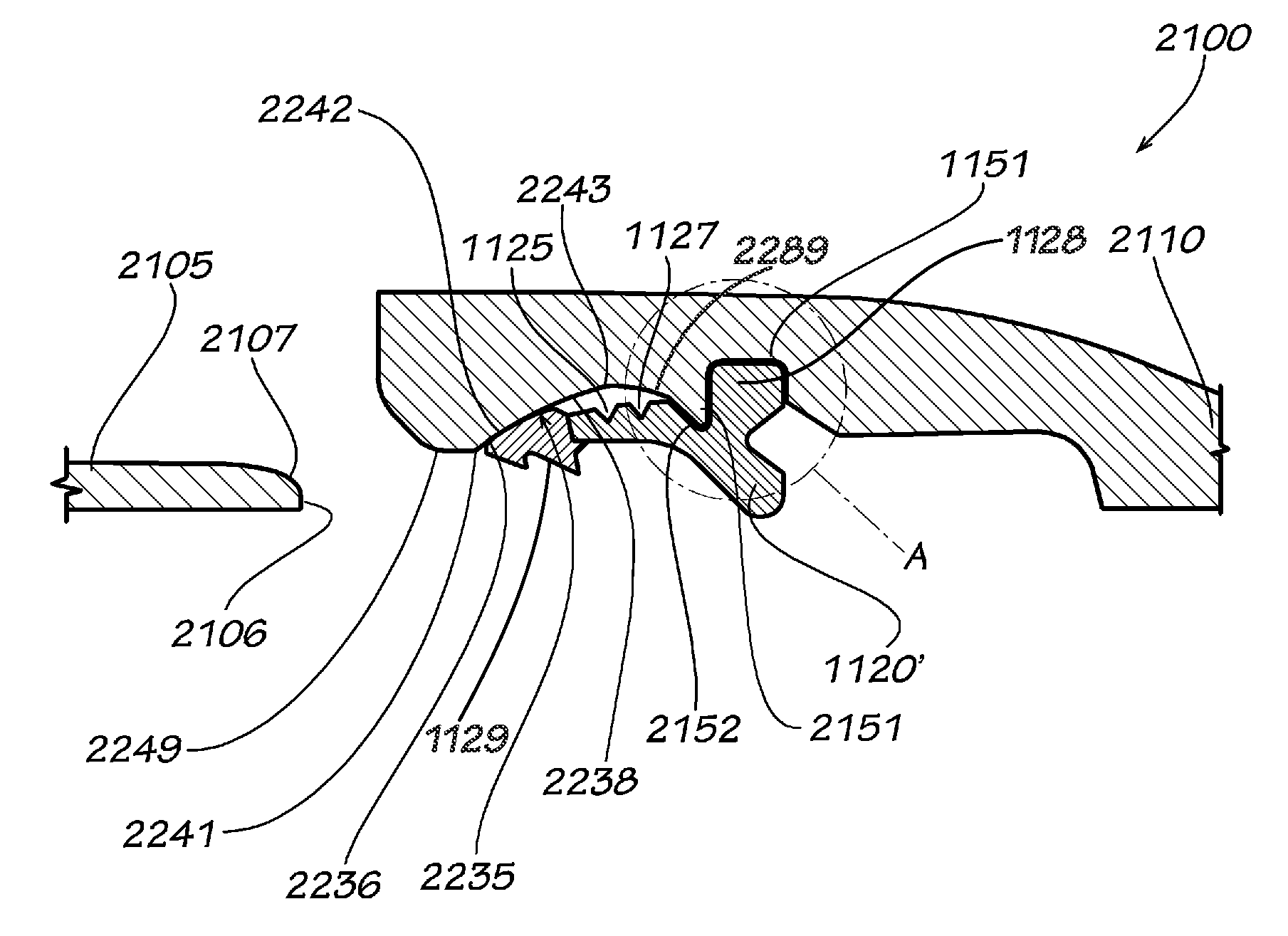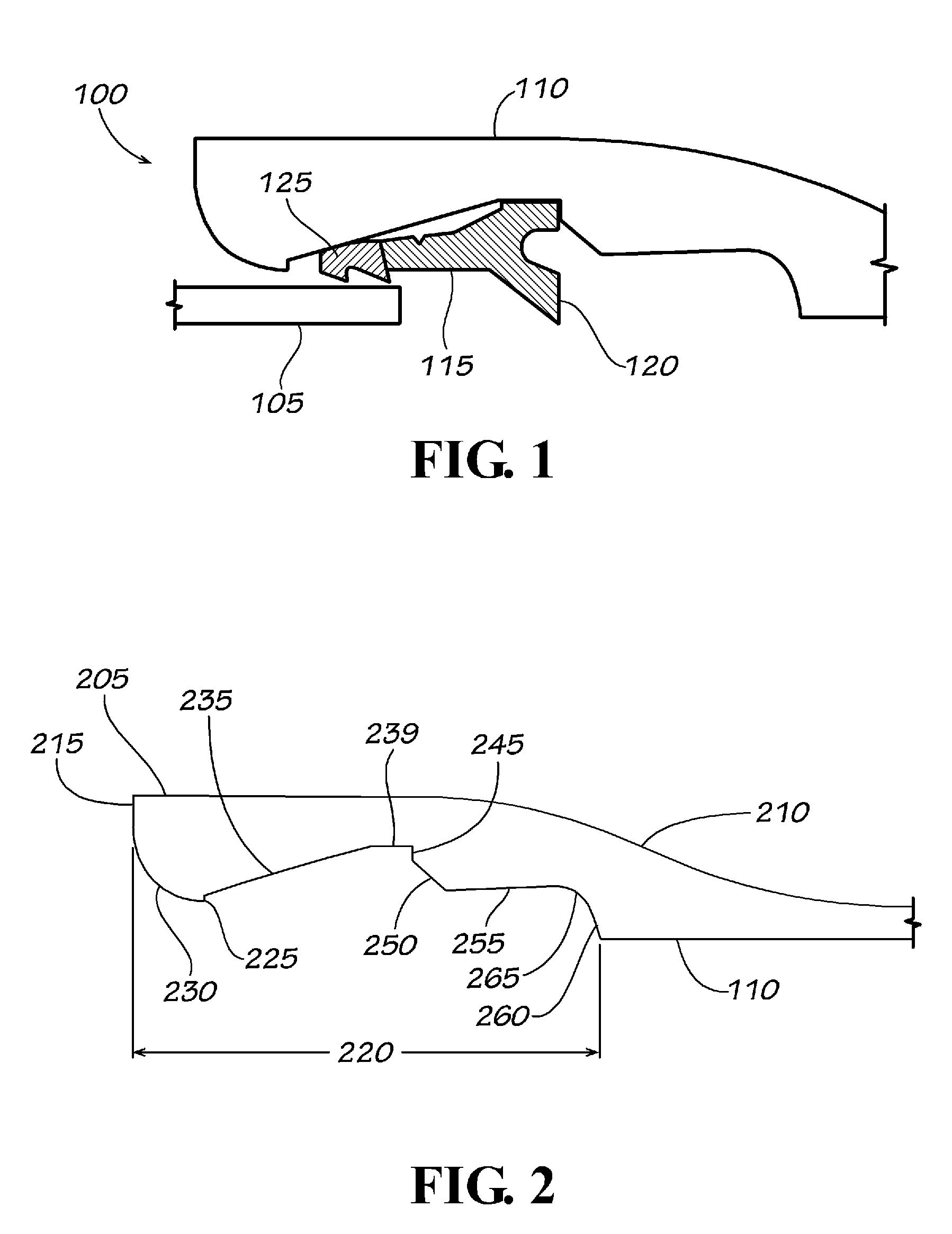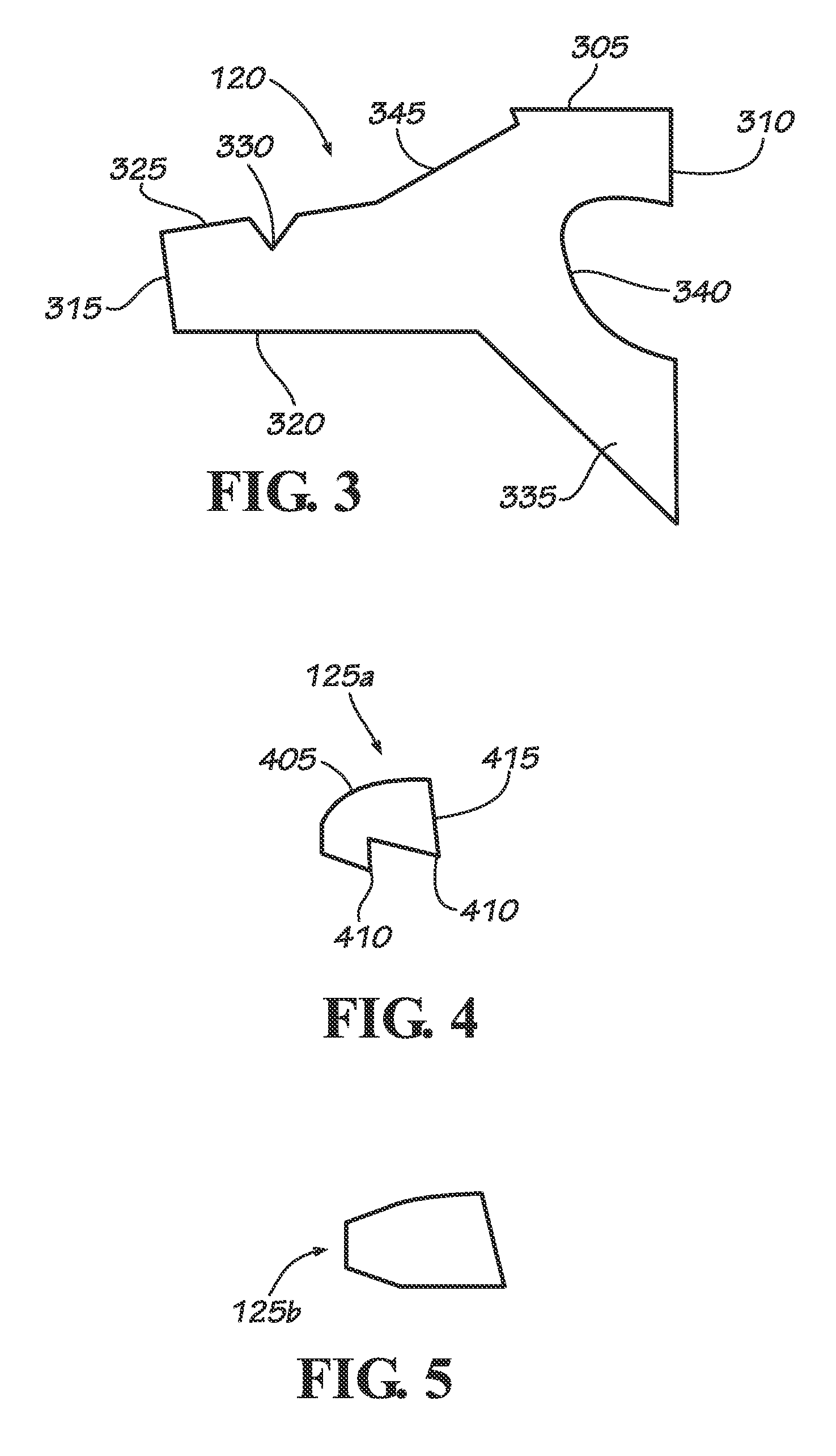Gasket for parabolic ramp self restraining bell joint
a parabolic ramp and bell joint technology, applied in the field of couplings and methods, can solve the problems of bending or deflecting the joints, reducing the acceptance of fittings, valves, hydrants, etc., and achieves the effect of little increase in insertion for
- Summary
- Abstract
- Description
- Claims
- Application Information
AI Technical Summary
Benefits of technology
Problems solved by technology
Method used
Image
Examples
example
[0077]An experiment using two lengths of 8 inch pipe was conducted. One pipe had a bell as described herein while the other had a spigot as described herein. The two lengths were joined using a sealing device as described herein. The pipes were sealed at their respective open ends and the internal cavity was pressurized. The experiment was conducted first with the pipes having no deflection and then with the pipes having 5.7° of deflection. The results are compiled in Table 1.
MinimumPressure atTestNo. ofJointPressure,Failure,FailureNumberSegmentsDeflection, °psipsiMode180700772Gasket Tear280700771Gasket Tear31407001192Gasket Tear4100700998.5Gasket Tear5105.7700828.2Gasket Tear6147.5°7001028Gasket Tear
[0078]If “θ” is defined as the angle of deflection between the axis of the bell socket 1010 and the spigot 1005, through moderate angles of deflection, the locking segments 1025 following the major axis of an ellipse projected onto a plane inclined perpendicular to the axis will, on the...
PUM
 Login to View More
Login to View More Abstract
Description
Claims
Application Information
 Login to View More
Login to View More - R&D
- Intellectual Property
- Life Sciences
- Materials
- Tech Scout
- Unparalleled Data Quality
- Higher Quality Content
- 60% Fewer Hallucinations
Browse by: Latest US Patents, China's latest patents, Technical Efficacy Thesaurus, Application Domain, Technology Topic, Popular Technical Reports.
© 2025 PatSnap. All rights reserved.Legal|Privacy policy|Modern Slavery Act Transparency Statement|Sitemap|About US| Contact US: help@patsnap.com



